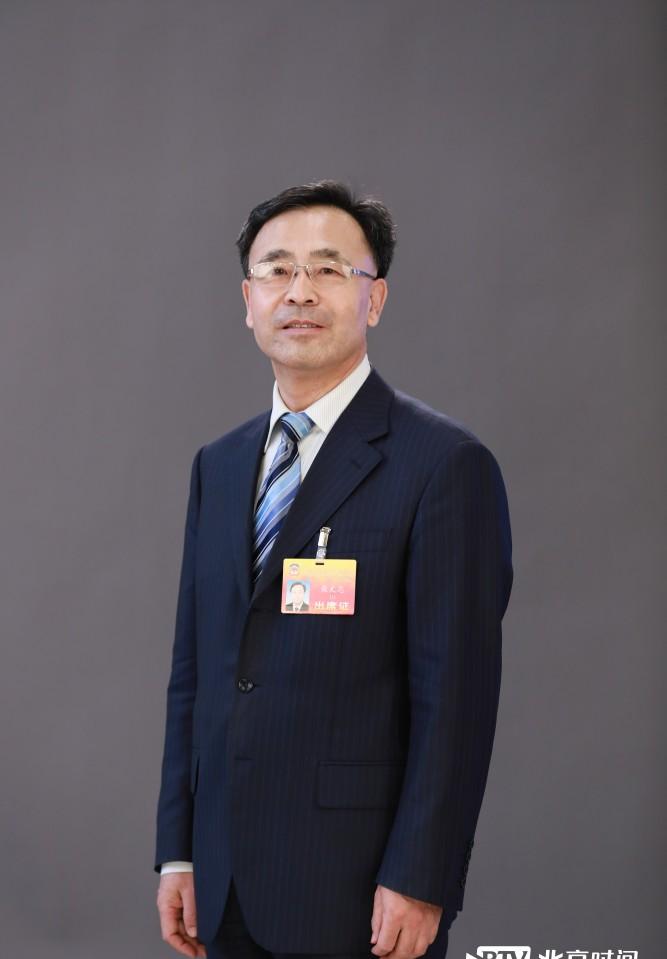A central axis condenses ancient and modern time and space, large and small museums treasure historical memories, and hutong blocks tell the charm of the old city... The rich historical and cultural heritage is a "golden business card" of Beijing, and at the fifth session of the 13th CPPCC Municipal Committee, many members offered suggestions and suggestions for the cultural construction of the capital, making this "golden business card" more shining.
Restore the original spatial form and historical features of the central axis

Member Chai Wenzhong
The 7.8-kilometer-long central axis is known as the backbone and soul of Beijing. Chai Wenzhong, a member of the Standing Committee of the Chinese People's Political Consultative Conference from the Jiusan Society, said that at present, there are still problems such as management intersection, scale imbalance, and distortion of place names around the central axis, "For example, in the 1960s, we changed some traditional road names and place names, the most typical of which was to change 'Huangcheng Root' to 'Huangcheng Root', although it was only a word difference, but it split the historical context of Beijing City. ”
On the basis of "correcting the names" of these place names, the proposal also proposes to amend the red lines of the planned roads of Yongdingmen Nei Avenue, Qianmen Avenue, Di'anmen Inner and Outer Avenues in accordance with the original scale of the traditional central axis roads, so as to restore the original spatial form and historical style to the greatest extent.
Wei Chunrong, a member of the CPPCC Municipal Committee from the literary and art circles and deputy director of the Art Committee of the Northern Kunqu Opera Theatre, focused on the "revitalization" of the central axis. "Although we have now made in-depth excavations and detailed explanations of the historical and cultural values of the central axis, how to transform it into popular cultural pride is still a challenging problem." She suggested that we should create a revitalization drama that comprehensively presents the cultural value of the central axis, and reproduce the great charm of historical heritage on the stage through lighting and dance, virtual reality and other means.
Drawing a "map" of Beijing's historical and cultural resources
Member Yang Bogang
Beijing's historical and cultural city has rich data resources, but the ownership of rights and interests is contradictory; the types of various data types are complex and the standards are different. Yang Bogang, a member of the CPPCC Municipal Committee from the Association for Science and Technology and director of the Key Laboratory of the Municipal Institute of Surveying and Mapping Design, aimed at this basic issue in the protection of Beijing's famous historical and cultural cities.
"The spatial positioning, update cycle, and hierarchical structure of the data are inconsistent, and it is difficult to achieve information docking between the data, which hinders the mining and utilization efficiency of the protection information of the historical and cultural cities." Yang Bogang believes that it is necessary to comprehensively find out the background of the city's historical and cultural resources and establish a complete set of data specification standards - on the basis of integrating, extracting and processing existing data, collecting and supplementing paper data and digitizing it, and standardizing inconsistent data such as spatial substrates. In this way, the city's historical and cultural elements can be formed into an organic whole, forming a "map" of Beijing's historical and cultural resources with full spatial coverage and full inclusion of elements. Through the regular update and maintenance of data, it provides support for the common use of historical and cultural resources in the city.
To build a "city of museums", we must not ignore the power of the people
Cong Wei is a member of the Committee
The "City of Museums" is an important content and carrier for Beijing to build a national cultural center. Cong Wei, a member of the CppcC Municipal Committee from the science and technology sector and deputy director of the Beijing Technology Market Management Office, said, "At present, there are still insufficient mapping of museum resources in the region, especially for non-kumon entities. And these museums should be important resources for building a "museum city". ”
He suggested that we should find out the bottom number of the resources of the municipal museums as soon as possible to prevent the outflow of high-quality museum resources; at the same time, we should encourage them to develop cultural creations around the collection of cultural relics, etc., and further stimulate the development vitality of private museums.
Yan Xianliang, a member of the CPPCC Municipal Committee from the Jiusan Society and director of the Cultural Standards Research Center of the China Academy of Arts and Science and Technology, believes that the current "museum city" only pays attention to the construction of isolated museums, and does not pay attention to the planning and reproduction of the great spirit of the exhibition line in the historical and cultural district. "The open block museum is an indispensable and organic part of the 'City of Museums', the context that connects the museum, and the cultural route into history." He suggested that the Dongcheng District's Dongsi Hutong could be selected as a pilot demonstration area for the construction of a "museum-type block", and on the basis of the Dongsi Folk Customs Museum, a nameplate could be set up for the hutongs where celebrities lived in the Dongsi Sanjo to Shitiao, and the deeds of celebrities could be interpreted.